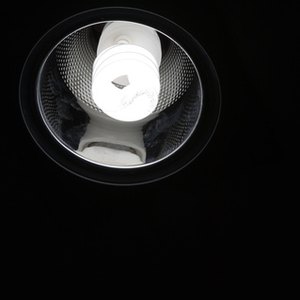
Fluorescent light bulbs are used in many commercial applications primarily because they save the company money on electricity bills. Many people do not realize the differences in costs between different types of fluorescent bulbs. On a global scale, experts such as Abt & Associates are researching potential future economic impacts. The concerns are environmental effects these bulbs create because of their toxic mercury content and how they can affect human health and the fishing industry.
Lower Energy Bills
You can have lower electricity bills wiht fluorescent bulbs compared with incandescent lamps, because fluorescent bulbs convert electrical power into light more efficiently. Different types of fluorescent lights exist for different uses; for example, tube lights such as T12, which are being phased out for the more efficient T8 light bulbs. These bulbs are usually used in commercial spaces, industries, warehouses, schools and government buildings. They are also used in residential spaces such as kitchens and garages.
Compact fluorescent (CFL) bulbs that fit in normal screw-in sockets are now popular. Compared to incandescent light bulbs, CFL bulbs cost three times less in electricity expenses.
Short-term Costs vs Long-term Costs
Because a fluorescent bulb needs a ballast to control the flow of current through the lamp, it is usually more costly than an incandescent lamp. Also, compared to other fluorescent lamps, buying the cheapest fluorescent bulbs with integrated electronic ballasts may save you on short-term costs; however, they have a shorter life span and therefore will end up increasing your long-term costs due to lamp replacement costs. Tax incentives are available in some states, and utility discounts are available in certain municipalities to assist in offsetting the upfront costs of purchasing quality fluorescent bulbs.
Less Maintenance Costs
Looking at the life-span of a fluorescent bulb is a very important factor in your overall economic impact. The longer life can minimize lamp replacements, which as of 2010 average about $15 per light. This can add up quickly, especially if you include additional per trip charges or other surcharges that may be included.
Writer Bio
Mercedes Martinez is an eco-designer focusing on renovations. She has a degree in interior design and a minor in architecture. Recently, Martinez has been enjoying exploring her writing skills that have developed her passion for design.

